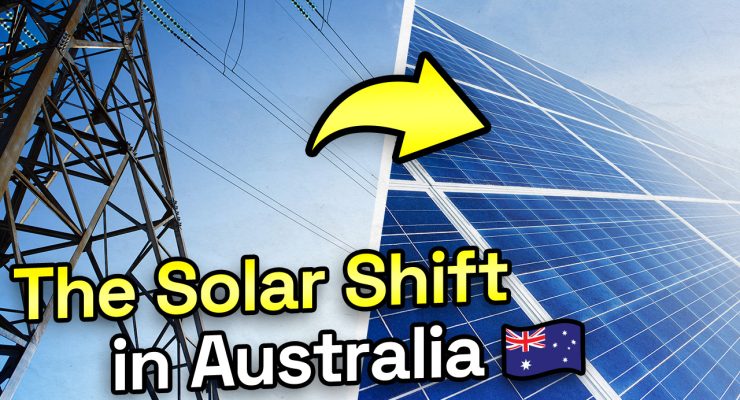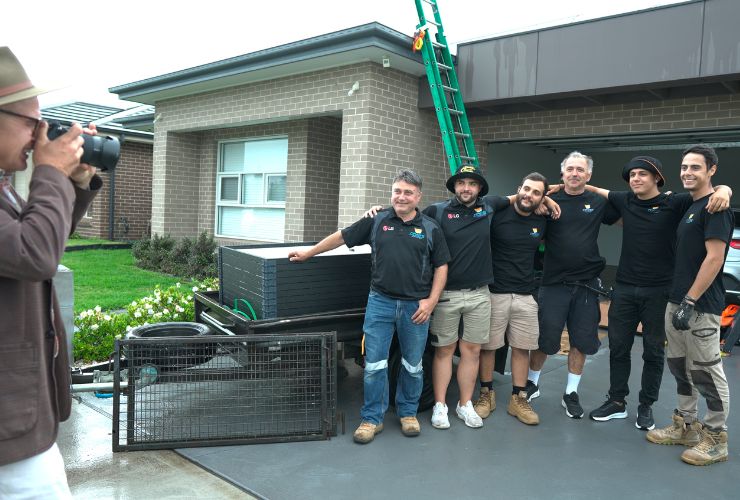
Fast read
Solar energy has become increasingly popular in Australia, with approximately 30% of Australians switching to solar panels for power.
This growth has been driven by a combination of environmental concerns, government rebates, feed-in tariffs, high and increasing electricity prices, cheaper panel and inverter pricing, and straightforward installations. In addition, Australia has a sunny climate and high electricity prices, which make solar an attractive option for homeowners.
The country's feed-in tariff system also allows homeowners to earn additional income from the excess solar energy they produce. Overall, the adoption of solar energy has been driven by a combination of economic and environmental factors.
Why have so many Australians turned to solar?
By 2022 30% of Australian homes have switched to solar power by installing solar panels. A two-fold growth from 2012 (15%). This means over 3 million homes have made the switch to solar now.
This starkly contrasts with other developed countries, such as the U.S., where approximately 4% of residents have solar panels. But why exactly have so many Australians switched to solar?
Many factors have led us to become world leaders in solar on residential roofs. They are:
Environmental concerns
Over the past decade, Australia has seen a record number of bushfires, droughts, and flooding. More natural disasters and high temperatures are causing problems for Koalas, the Great Barrier Reef, and native animals. Their habitats are being lost, and they are facing threats from fires and floods.
The former Federal Liberal Government, for a decade, has denied a problem existed and did not enter action. Then, finally, the Australian population decided to act, and solar in their own home and business was one of the easiest ways to fight climate change.

The Government rebate
One of the primary reasons for the increase in Australians switching to solar comes in the form of solar rebates that incentivise the purchasing and installation of a solar PV system.
The Australian solar rebate scheme run by the Federal Government has seen many changes over the years but overall did contribute at least 25% towards purchasing a solar energy system and, in earlier years, as much as 66% in rebates.
Certain States, like Victoria, provide additional financial assistance for solar panels. This, along with the Federal rebate, makes the switch to solar panels a must-have for homeowners in those areas. Smart homeowners in these regions should consider investing in solar panels.
The Feed-in tariff (FiT)
Other than rebates, feed-in tariffs have allowed Australians to gain additional income from solar power, encouraging the switch to solar. In the past, feed-in tariffs paid 60 to 40 cents per kWh. Now, they are reduced to 5 to 10 cents per kWh.
Feed-in tariffs are left to the State Government to regulate in states such as NSW and Victoria. Therefore suppliers must provide a minimum tariff of 5.2 cents per kWh in 2022.
With the increase of wholesale electricity prices and the growth of EV charging during the day, the value of midday electricity is expected to increase again, and consequently, so will FiT payments.
Relatively high and increasing electricity prices
Electricity prices have increased significantly over the past decade. Moreover, they seem to rise to new levels each year, this has promoted switching to solar by many Australians.
The cost of wholesale electricity has increased by almost 140% in recent years. This cost makes up about 30-40% of the total price per kilowatt-hour. The Australian government suggests that household energy bills have increased by 72% since June 2013.
Whilst owners may still rely on the electricity grid for any additional kWhs that their system cannot produce, it is through solar systems that homeowners are fighting back to reduce the sting of their sharply rising electricity bills.
Cheaper solar panel and inverter pricing
The International Renewable Energy Agency found in its 2019 report that “Since 2010, the cost of energy has dropped by 82% for photovoltaic solar, by 47% for concentrated solar energy (CSP), by 39% for onshore wind and by 29% for wind offshore.”
Chinese solar panels are cheaper to produce because they are made in large quantities. This makes them more affordable compared to panels made in Korea, Europe, or Australia. This price reduction also applies to racking and solar inverters.
Straightforward solar installs
Solar installation is complicated, with many panels weighing more than 22kg nowadays. However, there has been a willing workforce to embrace solar installation, and this competition has kept installation prices reasonable.
Also, luckily Australian roofs are relatively flat or low-angle and often single-story. Compared to Europe, where many roofs are steep to assist the snow sliding down predominantly double or three-storeys, an installation in Australia is more straightforward.
Many roofs are tile or metal sheeting, allowing economy of scale when ordering racking, brackets, and clamps. This, again, keeps installation costs of solar panels at a reasonable level.

The powerful rays of the Australian sun
A 6.6 kW solar system in Brisbane will produce 25% more electricity than a 6.6 kW solar system in Hobart. The reason is the sun intensity (solar irradiance) and sunlight hours in Brisbane compared to Hobart.
But when compared to some other solar adoptive countries such as Germany, many Australian renewable energy systems will produce 100% more renewable electricity, over a more extended period of the day, than the same size PV system in Germany.
An Australian system has a good Return on Investment (ROI) of 3 to 5 years.
These seven factors have caused solar prices to drop and popularity to rise in the last ten years. This has led more homeowners to switch to solar energy, with the average residential system size increasing from 1.5 kW in 2008 to over 7 kW in 2022.